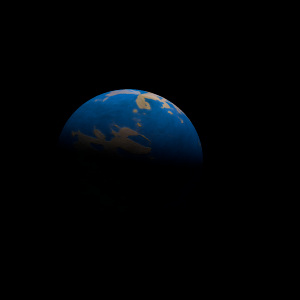|
|
Space Astro
|
Info for exoplanet "Pupux"
| Scientific (actual) data |
|---|
| Name | HD 153557 Ac |
| Planet status | Confirmed |
| Mass sini | 0.055 |
| Orbital period | 15.3 |
| Semi major axis | 0.111 |
| Discovered | 2022 |
| Updated | 2025-02-11 |
| Omega | 142.315 |
| K | 6.128 |
| Publication | Published in a refereed paper |
| Detection type | Radial Velocity |
| Mass measurement type | Radial Velocity |
| Star name | HD 153557 A |
| Right ascension | 254.47° |
| Declination | 47.37° |
| Mag v | 7.82 |
| Mag j | 6.005 |
| Mag h | 5.557 |
| Mag k | 5.458 |
| Star distance | 17.9412 |
| Star mass | 0.7451 |
| Star radius | 0.79 |
| Star sp type | K3V |
| Star temperature | 4837 |
| Star alternate names | *V1090 Her, BD+47 2415 A, GJ 649.1 A, STFA 32 A, STF 4032 A |
| Wikipedia article | HD 153557 Ac |
Back
| |
| Fictional info (?) |
|---|
| Suggested name | Pupux |
| Planet type | Terrestrial |
| A prominent result is the "great yellow spot", a giant storm that is known to have existed for centuries since it was first observed by radar.
The surface is often full of hostile and primordial herbivores known as "Ehetyn-u". They spend their life while seeking a substance called "Fyqi'sane". The Ehetyn-u are similar to the Uzinyn-yl and have 7 legs and vary in length from 16 to 19 mm. Ehetyn-u are known to thrive at temperatures from -60 to -10°C and even extreme gravity which is common on Pupux. |
| Estimated population | 2900000000 |
| Atmosphere | Water | 46% |
| Carbon dioxide | 33% |
| Oxygen | 13% |
| Methane | 8% |
| Atmospheric pressure | 0.0011 bar |
 |
| No known satellites |
| Google search for Pupux |
|
Website by Joachim Michaelis
|
|
|
|